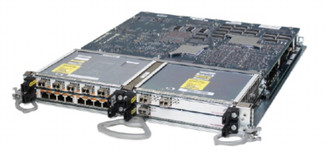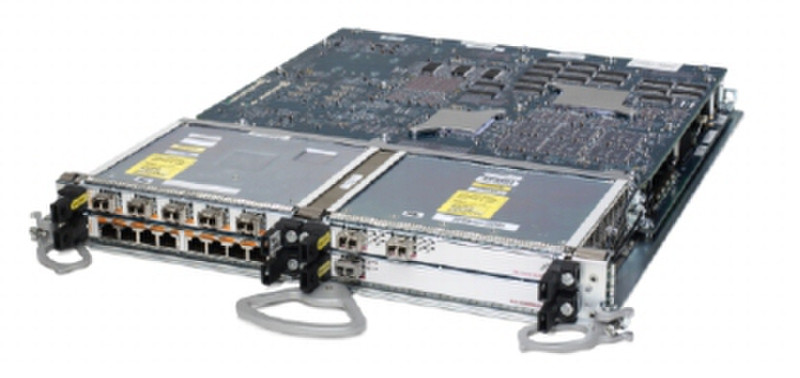目錄的
-
目錄的
- Antiquitäten & Kunst
- Auto & Motorrad: Fahrzeuge
- Baby
- Bücher
- Camping & Outdoor
- Feinschmecker
- Haustierbedarf
- Heimwerken & Garten
- IT和电子
- Kleidung & Accessoires
- Modellbau
- Musik
- PC- & Videospiele
- Sammeln & Seltenes
- Spielzeug
- TV, Video, DVD
- Telekommunikation
- Uhren & Schmuck
- Wellness & Beauty
- fashion & lifestyle
- institutional food services equipment
- medical equipment, accessories & supplies
- 个人护理
- 休闲爱好
- 办公设备,用品和配件
- 商业与工业
- 家居,建筑,装修
- 家用电器
- 摩托车及配件
- 武器和弹药
- 照相机
- 花园和庭院
- 运动,娱乐及休闲
- 食物
- 高保真音響
Filters
Search
Cisco SIP-601
凡购买和价格 (Advertising *)
顶部
技术特点
顶部
认证标准
| 安全 | UL/CSA/IEC/EN 60950-1, AS/NZS 60950 |
|---|
管理功能
| 管理协议 | PIM-DM, PIM-SM, IGMPv1/v2, GMP, MBGP, MSDP, LDP, RSVP-TE, MPLS, SNMP, MIB |
|---|
Cisco XR 12000 and 12000 Series SIP with the 8XFE-TX, 5X1GE, 2XOC48-POS/RPR, and 1XCHSTM1/OC-3 SPAs, Cisco IOS 12.0(32)S, 4 single-height SPAs up to 2 full-rate SPAs; 2 double-height SPAs
The Cisco® Interface Flexibility (I-Flex) design combines shared port adapters (SPAs) and SPA interface processors (SIPs) to help prioritize voice, video, and data services. Enterprise and service provider customers can take advantage of improved slot economics resulting from modular port adapters that are interchangeable across Cisco Systems® routing platforms. The extensible Cisco I-Flex design maximizes connectivity options and offers superior service intelligence through programmable interface processors that deliver line-rate performance. Cisco I-Flex enhances speed-to-service revenue and provides a rich set of quality-of-service (QoS) features for premium service delivery while effectively reducing the overall cost of ownership. This data sheet contains the specifications for the Cisco XR 12000 and 12000 Series SIPs (SIP 401, SIP 501, and SIP 601).
- A common forwarding and queuing engine responsible for packet classification, forwarding decisions, packet queuing, and accounting without compromising the performance-Each SIP has two forwarding engines, one for ingress and one for egress, allowing the user to implement multiple features and QoS policies at the incoming traffic, independently from the features and the QoS policies applied at the egress interfaces. The multicast replication is done by the egress forwarding engine, hence a very scalable multicast implementation with a native and built-in security and QoS features for multicast flows.
- A modular physical layer interface module (PLIM) front end with intelligent oversubscription that hosts up to four SPAs-Each SPA has a dedicated interface (2.5 or 10 Gbps) to the SPA controller. A fair bandwidth allocation algorithm shares available and excess bandwidth between the SPAs (the oversubscribed SPA does not cause any packet drop on the nonoversubscribed SPA, and any unused bandwidth from one SPA is used by the other SPA). The Cisco XR 12000 and 12000 Series SIP supports three types of SPAs: interface-specific SPAs, service-specific SPAs, and multiservice SPAs.
- – Interface-specific SPAs-Each of these SPAs is optimized for one media and one speed, providing a dense solution ranging from OC-192/STM-64 down to T1/E1 and DS-0, 10-Mb Ethernet, 100-Mb Fast Ethernet, 1 Gigabit, and 10 Gigabit Ethernet.
- – Service-specific SPAs-Each of these SPAs provides additional service processing to the processing power of the engine to offer specific services such as IP Security (IPsec).
- A SPA controller that is responsible for adapting the user traffic flowing between the SPA interfaces and the Layer 3 forwarding engine-The SPA controller provides the ability to prioritize traffic from the SPA into the engine, maintaining QoS behaviors even in oversubscribed configurations. Intelligent oversubscription of 2:1 is performed thanks to two hardware capabilities:
- – 8-MB buffers to absorb a large traffic burst, beyond 10 GB, without packet drops
- – Two priorities of queuing (high and low) to protect higher-priority traffic in case of congestion
- A common forwarding and queuing engine responsible for packet classification, forwarding decisions, packet queuing, and accounting without compromising the performance-Each SIP has two forwarding engines, one for ingress and one for egress, allowing the user to implement multiple features and QoS policies at the incoming traffic, independently from the features and the QoS policies applied at the egress interfaces. The multicast replication is done by the egress forwarding engine, hence a very scalable multicast implementation with a native and built-in security and QoS features for multicast flows.
- A modular physical layer interface module (PLIM) front end with intelligent oversubscription that hosts up to four SPAs-Each SPA has a dedicated interface (2.5 or 10 Gbps) to the SPA controller. A fair bandwidth allocation algorithm shares available and excess bandwidth between the SPAs (the oversubscribed SPA does not cause any packet drop on the nonoversubscribed SPA, and any unused bandwidth from one SPA is used by the other SPA). The Cisco XR 12000 and 12000 Series SIP supports three types of SPAs: interface-specific SPAs, service-specific SPAs, and multiservice SPAs.
- – Interface-specific SPAs-Each of these SPAs is optimized for one media and one speed, providing a dense solution ranging from OC-192/STM-64 down to T1/E1 and DS-0, 10-Mb Ethernet, 100-Mb Fast Ethernet, 1 Gigabit, and 10 Gigabit Ethernet.
- – Service-specific SPAs-Each of these SPAs provides additional service processing to the processing power of the engine to offer specific services such as IP Security (IPsec).
- A SPA controller that is responsible for adapting the user traffic flowing between the SPA interfaces and the Layer 3 forwarding engine-The SPA controller provides the ability to prioritize traffic from the SPA into the engine, maintaining QoS behaviors even in oversubscribed configurations. Intelligent oversubscription of 2:1 is performed thanks to two hardware capabilities:
- – 8-MB buffers to absorb a large traffic burst, beyond 10 GB, without packet drops
- – Two priorities of queuing (high and low) to protect higher-priority traffic in case of congestion
-
支付方式
我们接受:











